Karl Siegfried Döhring (1879 – 1941) was a German architect, resident in Thailand, who designed a number of buildings with Art Deco or Bauhaus influence. I’ve long admired the palace he designed for King Chulalongkorn in Petchaburi, built between 1910 and 1916 in the Art Deco style. Sun coming through stained glass, putti with cornucopia, curved staircases and exquisite tiling make it wonderful to visit. You feel you’ve walked into turn-of-the-century Vienna transported to the tropics.
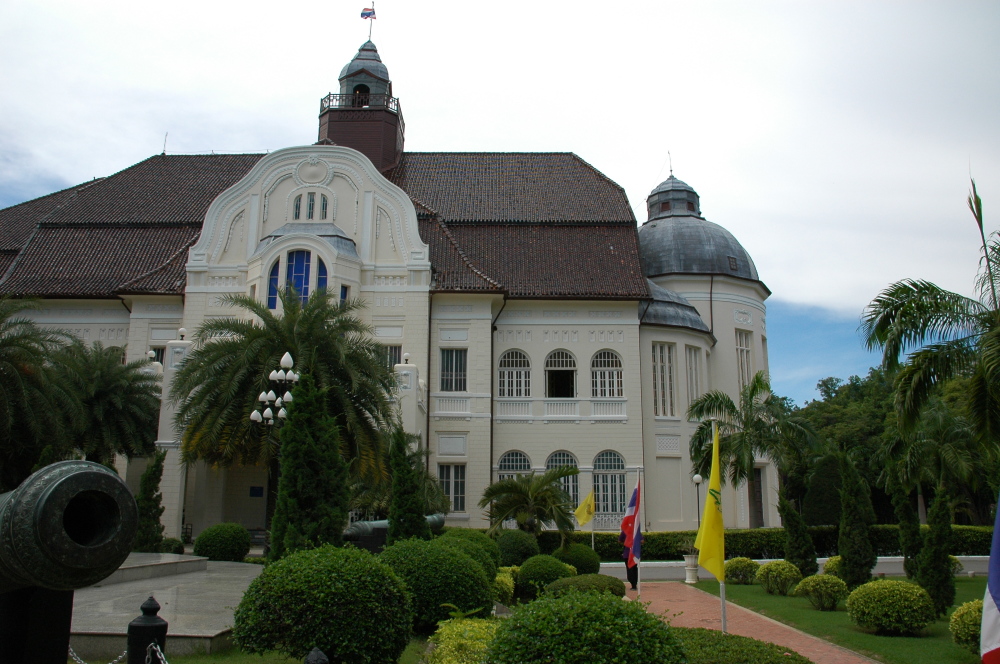
Phra Ram Ratchaniwet Palace in Petchaburi, architect Karl Siegfried Döhring 1910-1916
Until today I didn’t know he had also designed the former Thonburi railway station, sometimes called Bangkok Noi station, from which I used to take the train on visa runs south, every three months in 1985-6. It was always a hike to get to, but pleasant taking a ferry across the Chao Phraya early in the morning. The train to Malaysia was grimy and rackety and took forever. Vendors came down the aisles selling chicken wrapped in greaseproof paper, rice dishes and desserts wrapped in banana leaves. My destination was usually Penang, so there was Indian curry and sea air in the offing. I never paid the Bangkok Noi station any heed then, but I do now.
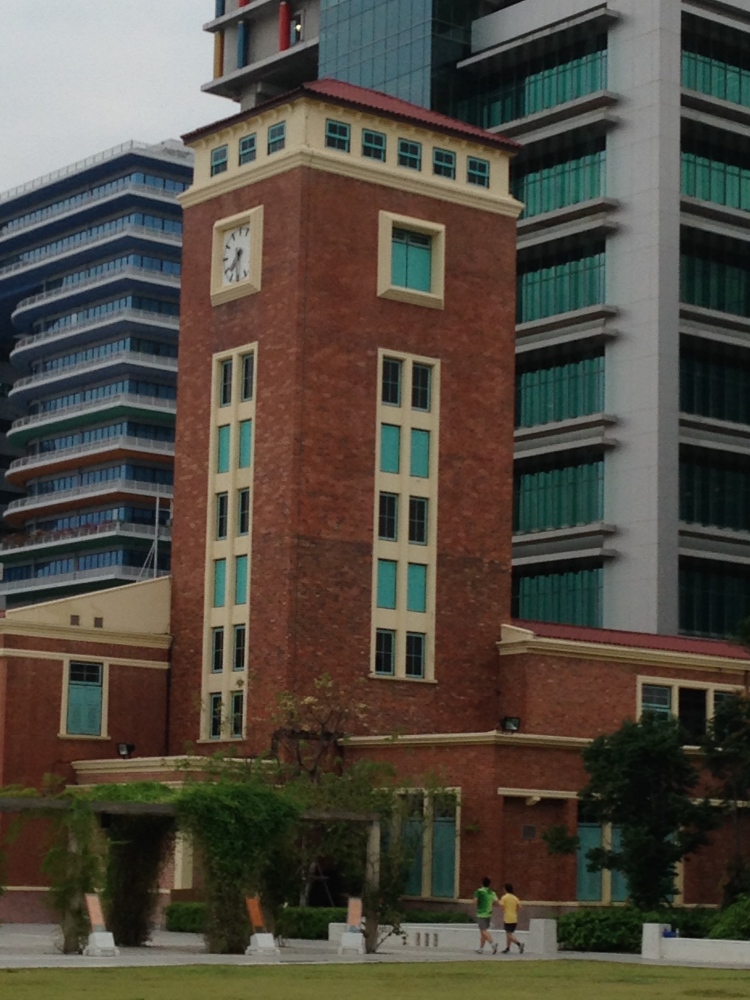
Former Bangkok Noi Railway Station, designed by Karl Siegfried Döhring in 1900.
Döhring was born in Cologne and died in Darmstadt. He worked from 1906 for the Siamese Royal State Railways. Besides Bangkok Noi station, he designed other railway buildings around the country – Phitsanulok, Phichit, Phichai, Uttaradit and Sawankhalok. One day I shall have to do a tour and have a look at them. They have in common a mix of European and Siamese tropical influence that is hard to describe but immediately recognisable.

Clean lines and bricky front restored.
The Bangkok Noi station originally served Petchaburi and only later the southern line to Hat Yai and onwards to Malaysia. The Allies bombed the original building during the Second World War, when it was used as a Japanese logistics base. It was rebuilt according to the original plan and reopened in 1950. What is remarkable are the clean, spare lines which anticipate by twenty years the Bauhaus signature style. The Deutscher Werkbund was already emphasising practicality and severe industrial lines in advance of the Bauhaus. This style of architecture dates from the end of the First World War until the rise of the Nazis in 1933. Döhring’s work is interestingly astraddle the two styles of his day – Art Deco and the Werkbund’s geometric expressionism. Bangkok Noi station is a good example of the latter.
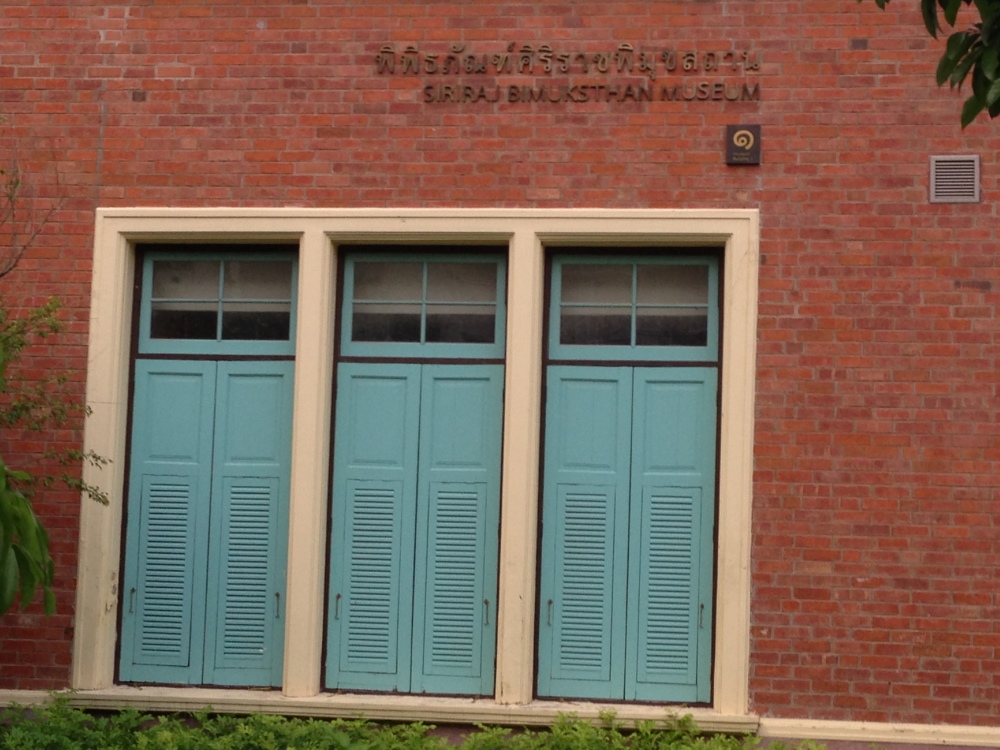
Minimalist detail, ornament abjured.
The station was decommissioned in 2003. It sits on a spit of land at the junction of Bangkok Noi canal and the Chao Phraya River, former site of the Rear Palace (วังหลัง wang lang), where the vice-regent lived. The last person to hold this post was Prince Anurak Devesh, a nephew of King Rama I, until his death in 1806. You can still see remains of the foundations of his former palace behind the station.
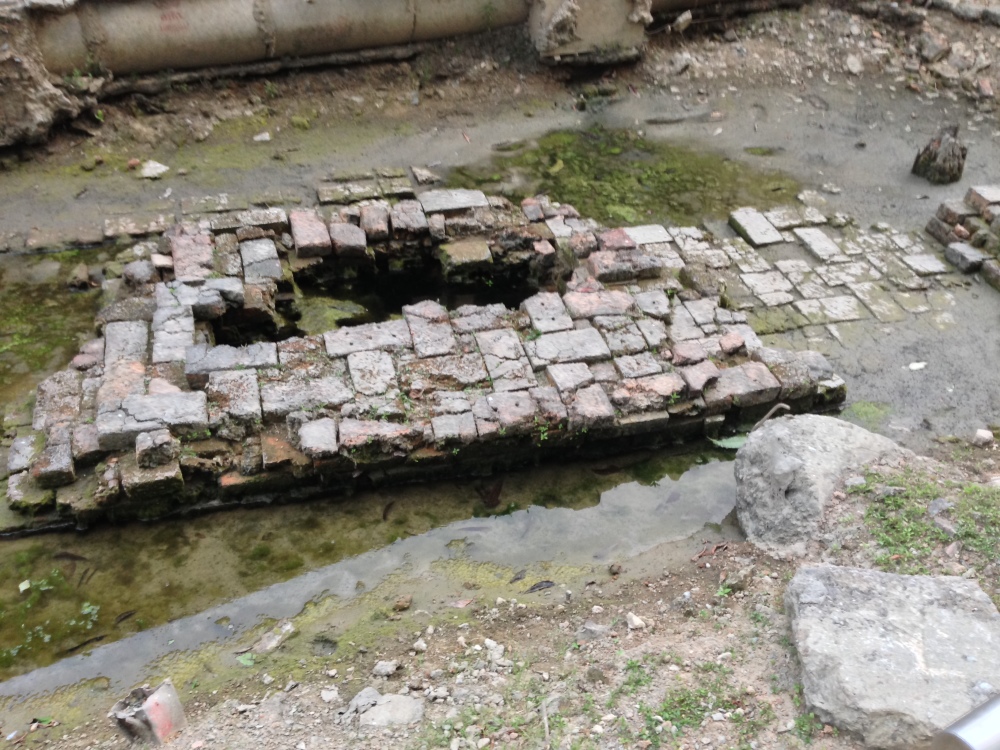
Foundations of the Wang Lang Palace, dating from the Rattanakosin period, 1700s.
The Bangkok Noi station is now a museum and the spit of land has been transformed into one of those reverential parks – all marble and topiary – the Thais go in for. In a city where shade is at a premium, such parks are like microwaved wedding cakes. This one has a fine pagoda commemorating King Chulalongkorn. The contrast between Siamese glitter and gold and the austere Germanic building behind is food for thought. There’s a boat stop on the express line and an S&P coffee shop.
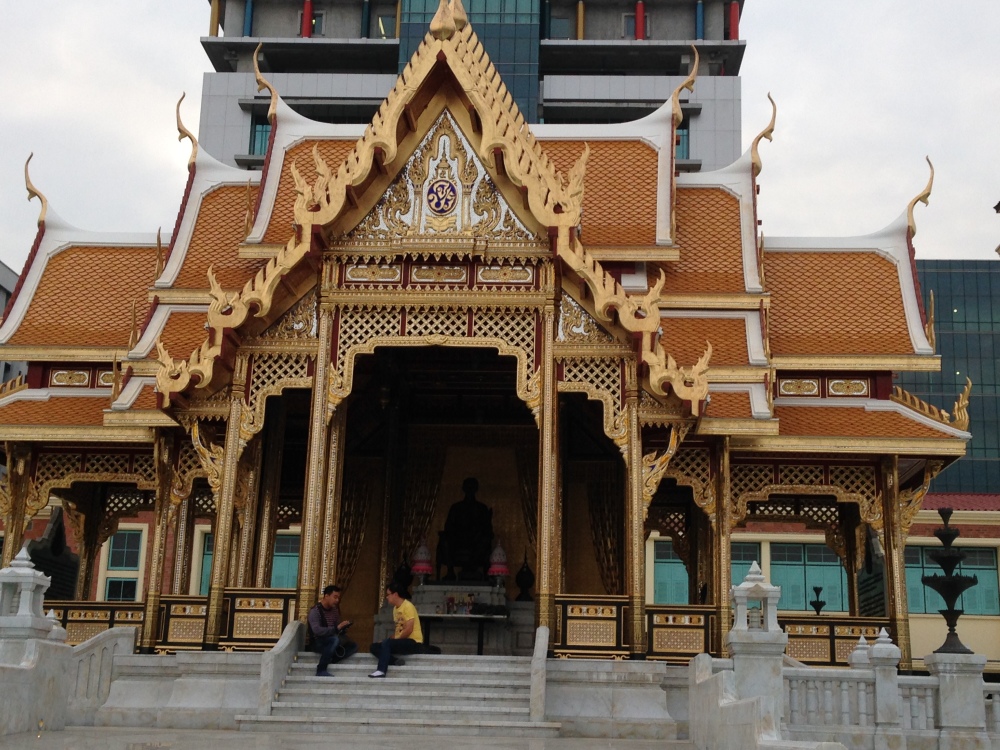
Pagoda commemorating King Chulalongkorn.
Döhring’s Petchaburi palace for King Chulalongkorn is in a different style. Curvaceous, with mansard roofs and fine detail, it creaks as you walk through it in bare feet on the polished parquet. Siamese royalty were in thrall to the trappings of European modernism. I don’t know how much of the detail Döhring was responsible for, or who the craftsmen were who carried it out. Many of the designs for the ceramic work, the spacious cupola and courtyard as well as the sweeping staircase have a Viennese elegance.
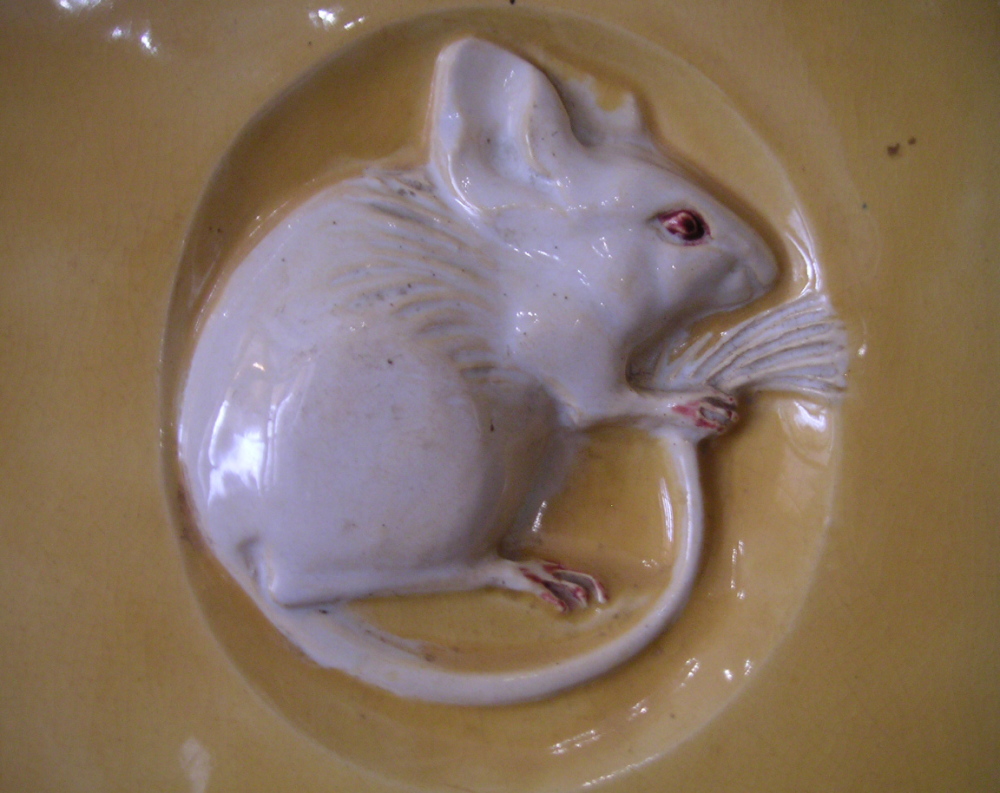
Exquisite glazed tiling, Ban Puen Palace, Petchaburi, 1910-1916.
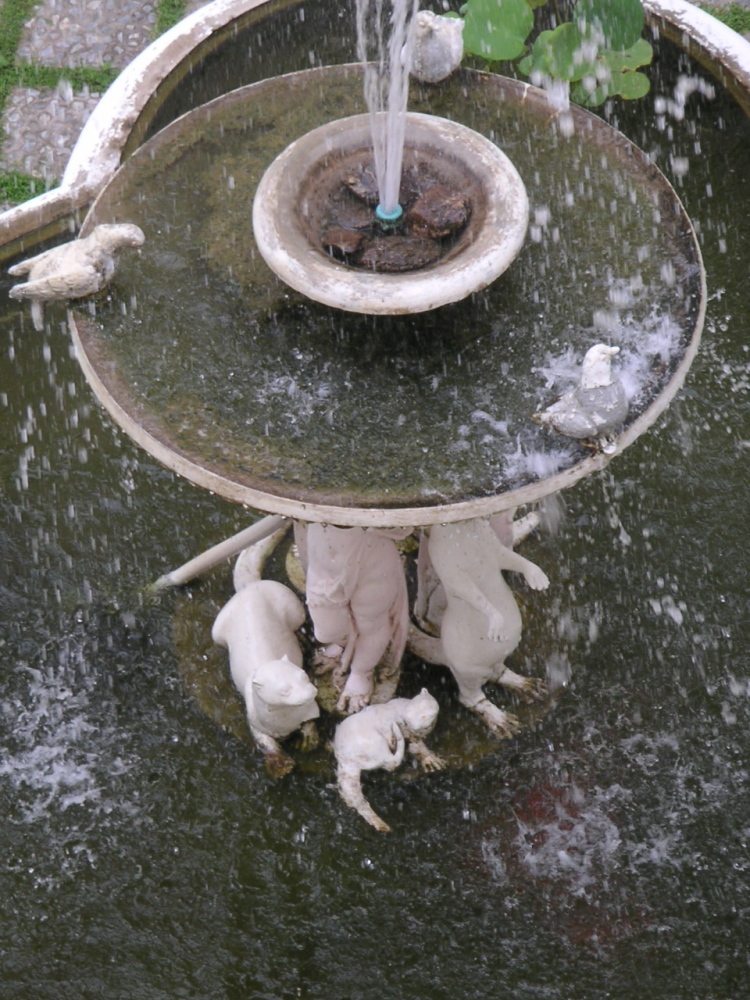
Fountain in the courtyard, Ban Puen Palace, Petchaburi, 1910-1916.
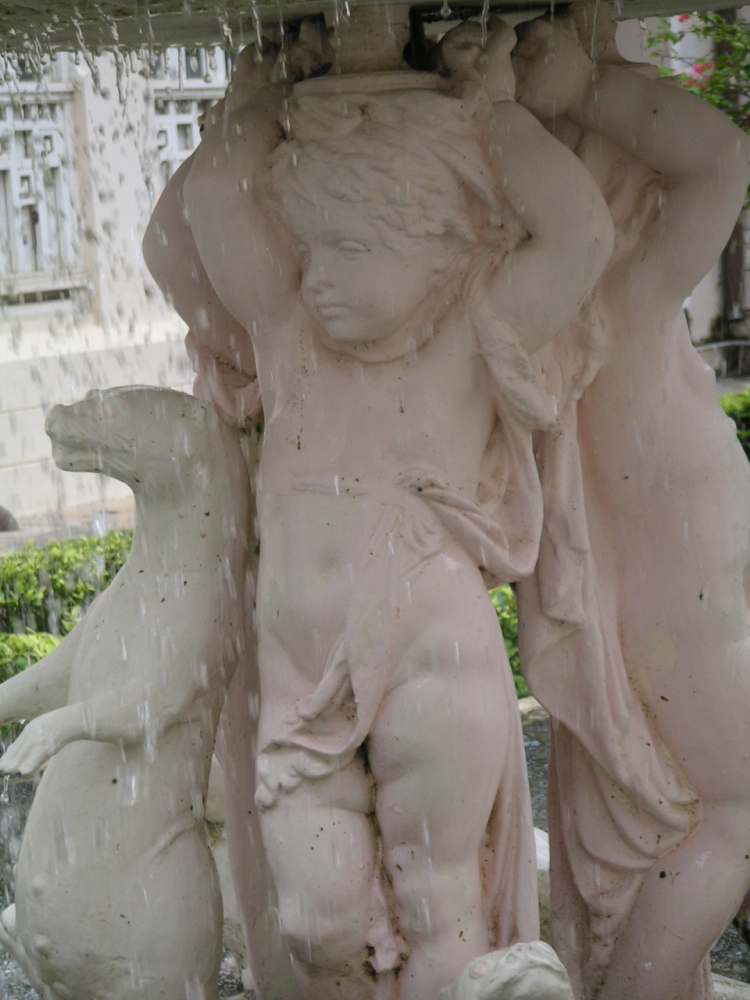
Another putto, Ban Puen Palace, Petchaburi, 1910-1916.
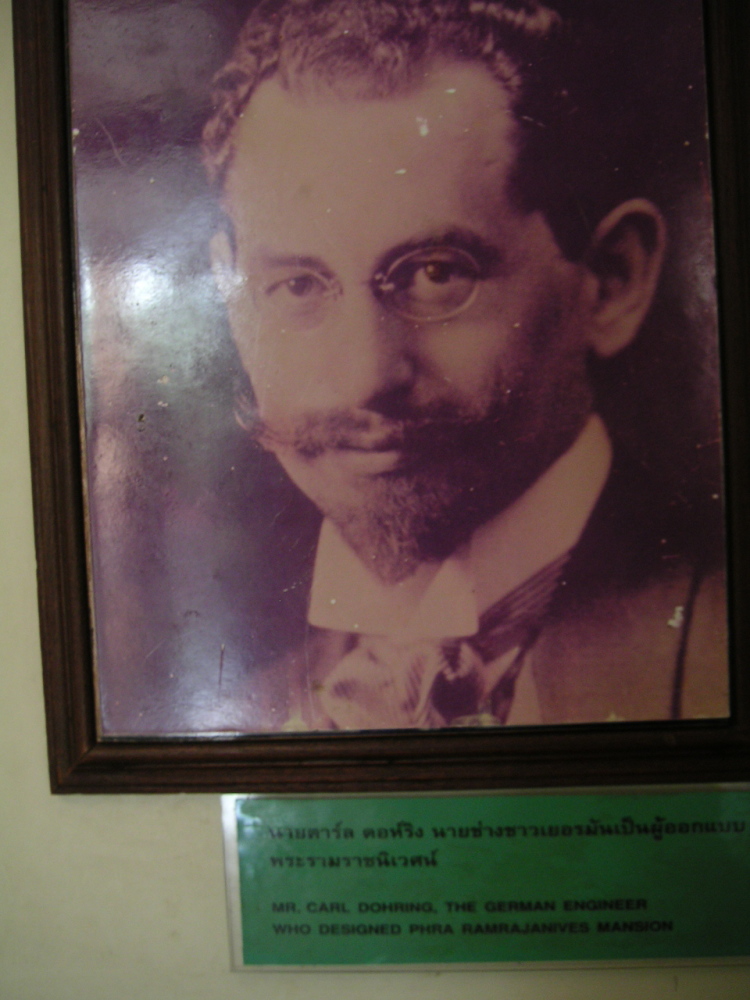
A portrait of Karl Siegfried Döhring, in the palace he designed in Petchaburi.
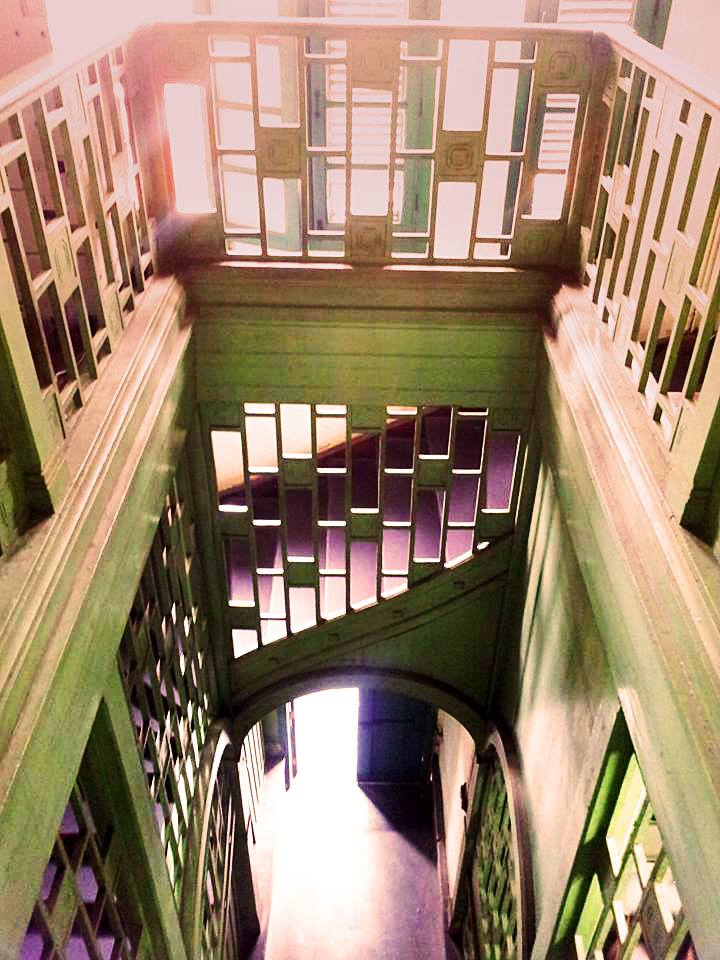
Staircase with Viennese (Koloman Moser) influence, Ban Puen Palace, Petchaburi, 1910-1916.
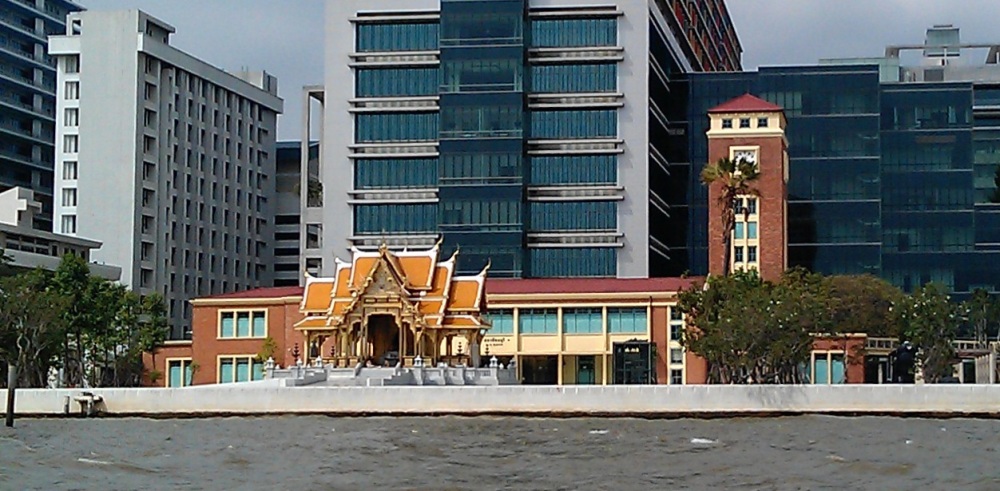
A view from the river: Döhring’s railway station sandwiched between the King Chulalongkorn pagoda and buildings of Siriraj Hospital.
Here and there in Bangkok and throughout the Kingdom are fine examples of Portuguese Tropical, Art Deco, Bauhaus and what I like to call Seaside Ice-cream Modernism. Sadly, a number of the old buildings along the riverfront and elsewhere are in serious need of restoration. There is also a good deal of Corinthian kitsch. Karl Siegfried Döhring’s contribution to Thailand’s architecture ought to be better celebrated and detached somewhat from the royal icing so that its architectural lines can be clearly seen.
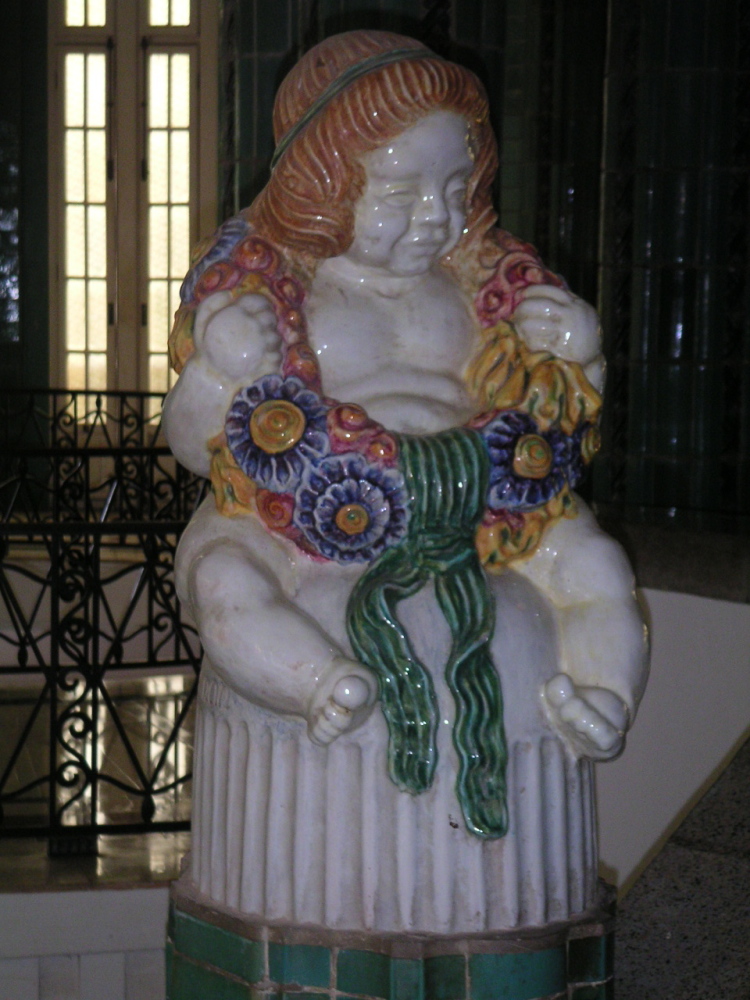
An Art Deco putto in the Ban Puen Palace in Petchaburi, 1910-1916.


10 thoughts on “Bauhaus & Art Deco Thailand: Karl Siegfried Döhring”